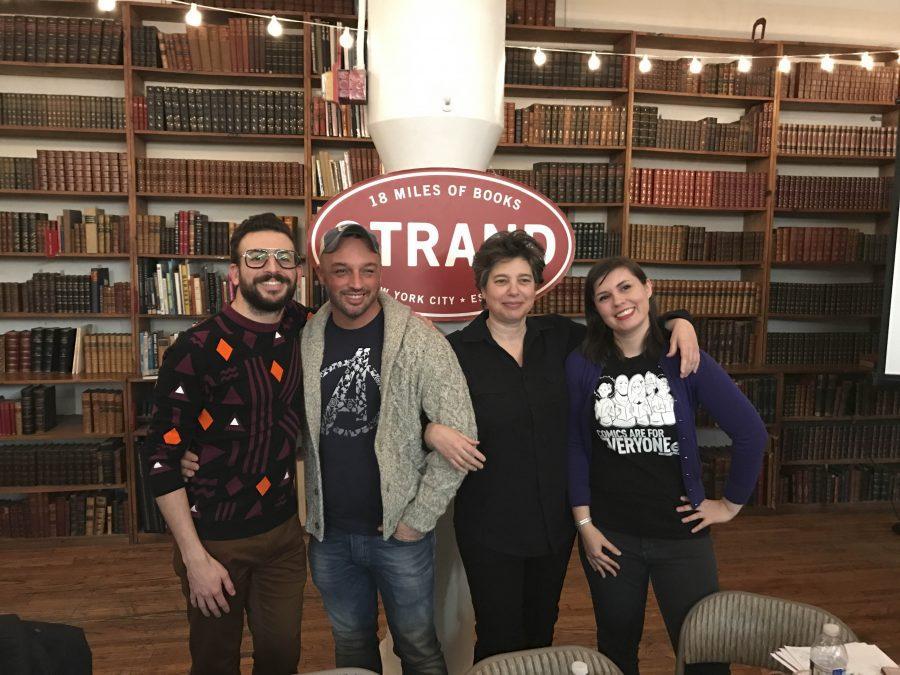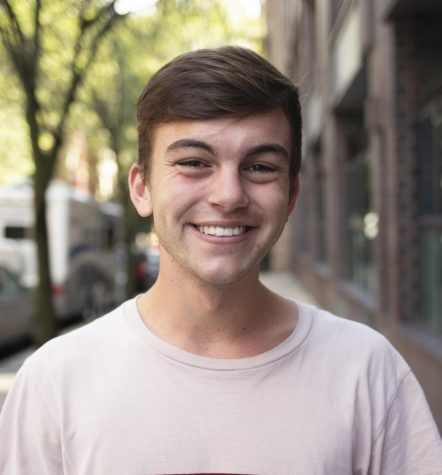Strand Panel Addresses LGBTQ Representation in Comic Industry
From left to right, Phil Jimenez, Ramzi Fawaz, Jennifer Camper and Margaret Galvan joined the panel hosted in Strand to discuss LGBTQ representation in the comic industry. The panel occurred on March 22.
March 27, 2017
As children, we grew up idolizing the superheroes we saw on-screen and read about in books, but who exactly gets to be a superhero? Why are superpowers and genetic anomalies designated exclusively to heterosexual, white men? This lack of equal representation still present in comics today instills a sense of inferiority in children at an early age when they have no Man of Steel to represent them.
This past Wednesday, the Strand Bookstore held a panel called Queer Studies and LGBTQ Representation in Comics to discuss this lack of diversity. Ramzi Fawaz, author of the book “The New Mutants,” moderated the discussion. The panel included queer scholars, active artists in the industry and speakers who are a combination of both.
The first panelist to speak was cartoonist and graphic artist Jennifer Camper, creator of the biennial Queers & Comics Conference. Beginning the evening on a humorous note, Camper presented excerpts of her work, which is centered on female and queer stereotypes and being Lebanese-American in post-9/11 New York City, drawn from her own experiences as such.
“I became a cartoonist when comics were a bastard art form, and now you can get an MFA in them,” Camper said. “We did comics because that’s all that was there for us. I wanted to talk about the world from my point of view.”
Phil Jimenez, known for his work as an artist and writer for “Wonder Woman” and “New X-Men,” was the next to chime in. Jimenez got his start in comics almost 26 years ago because the style of highly colorful, over-the-top, fantastical and often bombastic, overtly-sexualized characters seemed evidently queer to him.
“Today’s mainstream comic book universes are products of an industry that is straight, white, American, male and often rooted in religious ideals,” Jimenez said. “It is opposite of ‘the other.’ But with characters like ‘America Chavez’ and ‘Iceman and Romeo,’ we are finally being seen. Maybe not in huge numbers but substantially more than before.”
Departing from the panelists’ autobiographical conversations and their bodies of work, Fawaz and Camper spoke of established and forthcoming strategies that both readers and writers can use to shatter the glass ceiling of LGBTQ representation not only in comics but also in the media. Fawaz commented specifically on the ways of expressing difference — either directly, or through the use of metaphors.
“What compels me about comics of the past is that you may not have always had direct LGBTQ representation, but there were characters who were incredibly heterogeneous, living in fictional universes that were committed to democratic and egalitarian engagement of ‘difference,’” Fawaz said.
Audience members asked when readers would see more intersectional identities in comics, and Camper said that people must first feel urgency for corporations to hire more people of color, female and queer writers to create these heroes. Unfortunately, Camper and other established LGBTQ cartoonists are still obscured by an industry dominated by white men and produced for white men. Therefore, he said it is up to the next generation of writers to continue the fight, to ensure that every boy, girl and non-gender conforming child has their champion in a red cape.
A version of this article appeared in the Monday, March 27 print edition.
Email Ryan Mikel at [email protected].

























































































































































